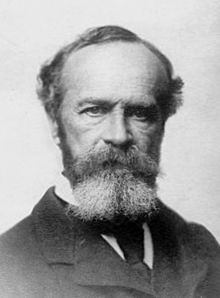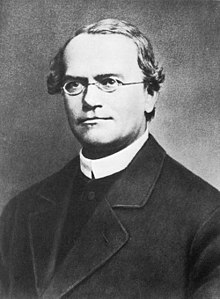Socialism
Socialism advocates public or direct worker ownership and administration of the means of production and allocation of resources, and a society characterized by equal access to resources for all individuals, with an egalitarian method of compensation.
- A theory or policy of social organisation which aims at or advocates the ownership and democratic control of the means of production, by workers or the community as a whole, and their administration or distribution in the interests of all.
- Socialists argue for a worker cooperative/community economy, or the commanding heights of the economy, with democratic control by the people over the state, although there have been some undemocratic philosophies. "State" or "worker cooperative" ownership is in fundamental opposition to "private" ownership of means of production, which is a defining feature of capitalism. Most socialists argue that capitalism unfairly concentrates power, wealth and profit, among a small segment of society that controls capital and derives its wealth through exploitation.
Socialists argue that the accumulation of capital generates waste through externalities that require costly corrective regulatory measures. They also point out that this process generates wasteful industries and practices that exist only to generate sufficient demand for products to be sold at a profit (such as high-pressure advertisement); thereby creating rather than satisfying economic demand.
Socialists argue that capitalism consists of irrational activity, such as the purchasing of commodities only to sell at a later time when their price appreciates, rather than for consumption, even if the commodity cannot be sold at a profit to individuals in need; they argue that making money, or accumulation of capital, does not correspond to the satisfaction of demand.
Private ownership imposes constraints on planning, leading to inaccessible economic decisions that result in immoral production, unemployment and a tremendous waste of material resources during crisis of overproduction. According to socialists, private property in the means of production becomes obsolete when it concentrates into centralized, socialized institutions based on private appropriation of revenue (but based on cooperative work and internal planning in allocation of inputs) until the role of the capitalist becomes redundant. With no need for capital accumulation and a class of owners, private property in the means of production is perceived as being an outdated form of economic organization that should be replaced by a free association of individuals based on public or common ownership of these socialized assets. Socialists view private property relations as limiting the potential of productive forces in the economy.
Early socialists (Utopian socialists and Ricardian socialists) criticized capitalism for concentrating power and wealth within a small segment of society, and for not utilising available technology and resources to their maximum potential in the interests of the public.
Anarchism and libertarian socialism
For the influential German individualist anarchist philosopher Max Stirner, "private property is a spook" which "lives by the grace of law" and it "becomes 'mine' only by effect of the law". In other words, private property exists purely "through the protection of the State, through the State's grace." Recognising its need for state protection, Stirner argued that "[i]t need not make any difference to the 'good citizens' who protects them and their principles, whether an absolute King or a constitutional one, a republic, if only they are protected. And what is their principle, whose protector they always 'love'? Not that of labour", rather it is "interest-bearing possession ... labouring capital, therefore ... labour certainly, yet little or none at all of one's own, but labour of capital and of the—subject labourers." French anarchist Pierre-Joseph Proudhon opposed government privilege that protects capitalist, banking and land interests, and the accumulation or acquisition of property (and any form of coercion that led to it) which he believed hampers competition and keeps wealth in the hands of the few. The Spanish individualist anarchist Miguel Giménez Igualada saw:
capitalism [as] an effect of government; the disappearance of government means capitalism falls from its pedestal vertiginously...That which we call capitalism is not something else but a product of the State, within which the only thing that is being pushed forward is profit, good or badly acquired. And so to fight against capitalism is a pointless task, since be it State capitalism or Enterprise capitalism, as long as Government exists, exploiting capital will exist. The fight, but of consciousness, is against the State.
Within anarchism there emerged a critique of wage slavery, which refers to a situation perceived as quasi-voluntary slavery, where a person's livelihood depends on wages, especially when the dependence is total and immediate. It is a negatively connoted term used to draw an analogy between slavery and wage labor by focusing on similarities between owning and renting a person. The term wage slavery has been used to criticize economic exploitation and social stratification, with the former seen primarily as unequal bargaining power between labor and capital (particularly when workers are paid comparatively low wages, e.g. in sweatshops), and the latter as a lack of workers' self-management, fulfilling job choices and leisure in an economy. Libertarian socialists believe if freedom is valued, then society must work towards a system in which individuals have the power to decide economic issues along with political issues. Libertarian socialists seek to replace unjustified authority with direct democracy, voluntary federation, and popular autonomy in all aspects of life, including physical communities and economic enterprises. With the advent of the Industrial Revolution, thinkers such as Proudhon and Marx elaborated the comparison between wage labor and slavery in the context of a critique of societal property not intended for active personal use, Luddites emphasized the dehumanization brought about by machines, while later American anarchist Emma Goldman famously denounced wage slavery by saying: "The only difference is that you are hired slaves instead of block slaves." Goldman believed that the economic system of capitalism was incompatible with human liberty. "The only demand that property recognizes," she wrote in Anarchism and Other Essays, "is its own gluttonous appetite for greater wealth, because wealth means power; the power to subdue, to crush, to exploit, the power to enslave, to outrage, to degrade." She also argued that capitalism dehumanized workers, "turning the producer into a mere particle of a machine, with less will and decision than his master of steel and iron."
Noam Chomsky contends that there is little moral difference between chattel slavery and renting one's self to an owner or "wage slavery". He feels that it is an attack on personal integrity that undermines individual freedom. He holds that workers should own and control their workplace. Many libertarian socialists argue that large-scale voluntary associations should manage industrial manufacture, while workers retain rights to the individual products of their labor. As such, they see a distinction between the concepts of "private property" and "personal possession". Whereas "private property" grants an individual exclusive control over a thing whether it is in use or not, and regardless of its productive capacity, "possession" grants no rights to things that are not in use.
In addition to individualist anarchist Benjamin Tucker's "big four" monopolies (land, money, tariffs, and patents), Kevin Carson argues that the state has also transferred wealth to the wealthy by subsidizing organizational centralization, in the form of transportation and communication subsidies. He believes that Tucker overlooked this issue due to Tucker's focus on individual market transactions, whereas Carson also focuses on organizational issues. Carson holds that "capitalism, arising as a new class society directly from the old class society of the Middle Ages, was founded on an act of robbery as massive as the earlier feudal conquest of the land. It has been sustained to the present by continual state intervention to protect its system of privilege without which its survival is unimaginable." Carson coined the pejorative term "vulgar libertarianism", a phrase that describes the use of a free market rhetoric in defense of corporate capitalism and economic inequality. According to Carson, the term is derived from the phrase "vulgar political economy", which Karl Marx described as an economic order that "deliberately becomes increasingly apologetic and makes strenuous attempts to talk out of existence the ideas which contain the contradictions [existing in economic life]."
Marxism
If we have chosen the position in life in which we can most of all work for mankind, no burdens can bow us down, because they are sacrifices for the benefit of all; then we shall experience no petty, limited, selfish joy, but our happiness will belong to millions, our deeds will live on quietly but perpetually at work, and over our ashes will be shed the hot tears of noble people.
— Karl Marx, 1835
Karl Marx saw capitalism as a historical stage, once progressive but which would eventually stagnate due to internal contradictions and would eventually be followed by socialism. Marx claimed that capitalism was nothing more than a necessary stepping stone for the progression of man, which would then face a political revolution before embracing the classless society. Marxists define capital as "a social, economic relation" between people (rather than between people and things). In this sense they seek to abolish capital. They believe that private ownership of the means of production enriches capitalists (owners of capital) at the expense of workers ("the rich get richer, and the poor get poorer"). In brief, they argue that the owners of the means of production do not work and therefore exploit the workerforce. In Karl Marx's view, the capitalists would eventually accumulate more and more capital, impoverishing the working class, and creating the social conditions for a revolution that would overthrow the institutions of capitalism. Private ownership over the means of production and distribution is seen as a dependency of non-owning classes on the ruling class, and ultimately a source of restriction of human freedom.
Barter
Barter is a system of exchange where goods or services are directly exchanged for other goods or services without using a medium of exchange, such as money. It is distinguishable from gift economies in many ways; one of them is that the reciprocal exchange is immediate and not delayed in time. It is usually bilateral, but may be multilateral (i.e., mediated through barter organizations) and, in most developed countries, usually only exists parallel to monetary systems to a very limited extent. Barter, as a replacement for money as the method of exchange, is used in times of monetary crisis, such as when the currency may be either unstable (e.g., hyperinflation or deflationary spiral) or simply unavailable for conducting commerce. Bartering could be considered a social starting point towards an anti-capitalist system, by negating the need for a medium of exchange.
Wage slavery
Wage slavery refers to a situation where a person's livelihood depends on wages or a salary, especially when the dependence is total and immediate. It is a pejorative term used to draw an analogy between slavery and wage labor by focusing on similarities between owning and renting a person.
The term wage slavery has been used to criticize exploitation of labour and social stratification, with the former seen primarily as unequal bargaining power between labor and capital (particularly when workers are paid comparatively low wages, e.g. in sweatshops), and the latter as a lack of workers' self-management, fulfilling job choices, and leisure in an economy. The criticism of social stratification covers a wider range of employment choices bound by the pressures of a hierarchical society to perform otherwise unfulfilling work that deprives humans of their "species character" not only under threat of starvation or poverty, but also of social stigma and status diminution. It has been argued by some centre-left and left leaning activists that the economy of the contemporary United States constitutes a softer form of wage slavery, in which conditions are not grinding, but nonetheless not conducive to individual economic progress.











